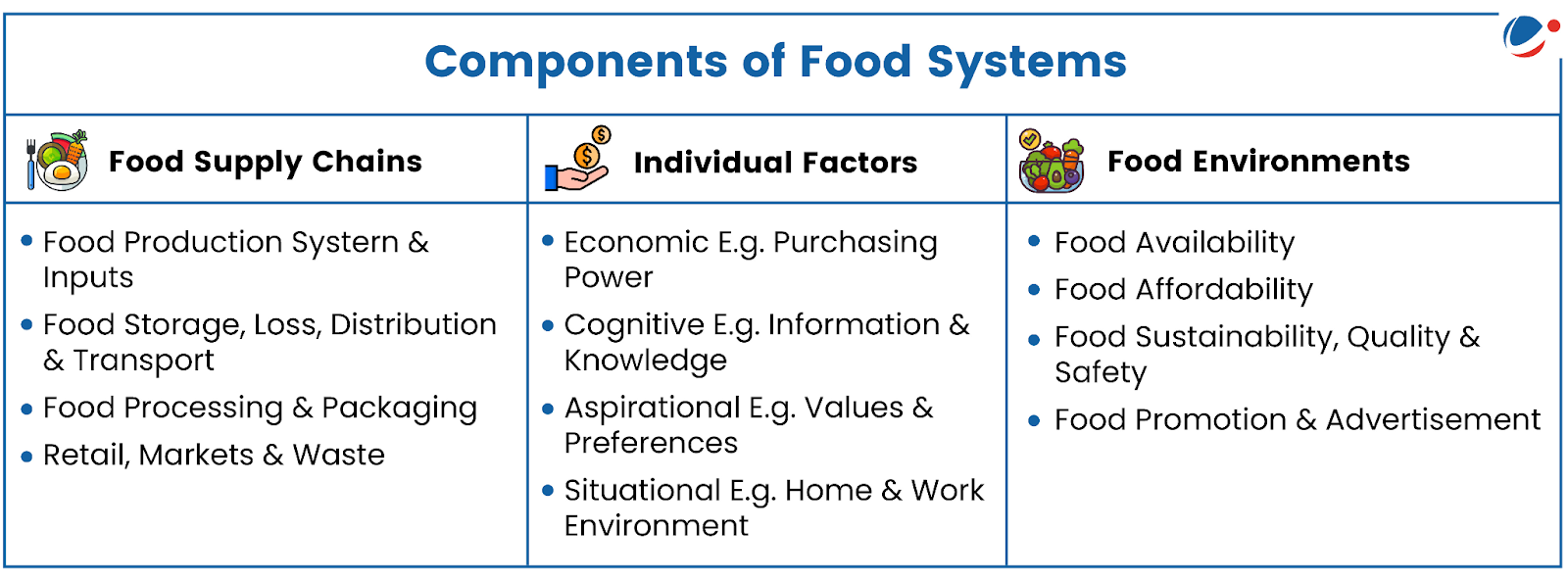As FAO marks 80 years, World Food Day 2025 highlights the urgent need for inclusive, sustainable partnerships to end hunger and strengthen food security.
World Food Day, observed annually on October 16, reminds us of a global mission: ensuring no one goes to bed hungry. Established in 1979 to commemorate the founding of the Food and Agriculture Organisation (FAO) in 1945, this day has evolved from a symbolic observance into a platform demanding transformation of global food systems.
This year's World Food Day holds significance as the FAO marks eight decades of fighting hunger and malnutrition. The milestone prompts reflection on historical successes where countries once devastated by war united to defeat hunger while acknowledging today's interconnected crises.
With 673 million people still experiencing hunger and challenges like food crises driven by climate shocks and conflicts emerging, the theme "Hand in Hand for Better Foods and a Better Future" calls for global collaboration in transforming Agrifood systems.
Understanding the Theme
The 2025 theme emphasizes two dimensions while drawing inspiration from FAO's Hand-in-Hand (HIH) Initiative. First, "Better Foods" shifts the conversation beyond caloric sufficiency to dietary quality and nutritional equity. Second, "Better Future" demands that food systems become environmentally sustainable, economically viable, and socially just.

The "Hand in Hand" aspect of the theme reflects FAO's Hand-in-Hand Initiative. Launched in 2019, it operationalizes this collaborative vision by supporting nationally-led programs to accelerate agrifood systems transformations. The initiative targets eradicating poverty (SDG1), ending hunger and malnutrition (SDG2), and reducing inequalities (SDG10) using advanced geospatial modeling and analytics alongside robust partnership-building.
Persistence of Global Hunger: The Failure of Food Systems
Food security is no longer only about producing enough calories. Countries such as India, despite maintaining welfare programs like the National Food Security Act covering over 800 million beneficiaries, still grapple with micronutrient deficiencies. Nearly 30% of children under five remain stunted, and anemia affects 59% of children aged 6 to 59 months.
This nutritional paradox where caloric sufficiency coexists with malnutrition highlights why the global focus must evolve toward building sustainable food systems that deliver diverse, nutrient rich diets to all populations.
In addition, the UN Secretary General António Guterres issued a warning: progress against hunger remains slow and is reversing in some regions. More concerning is the weaponization of hunger in conflict zones, where food security has become a geopolitical tool, pushing populations toward famine.
Addressing the Wastage of Food Crisis
One third of all food produced globally is wasted, approximately 1.3 billion tonnes annually. This wastage of food represents not just lost nutrition but wastage of resources like water, land, energy, and labor invested in production. Reducing food waste throughout the value chain has become a moral and environmental imperative.
Technology offers solutions. Digital platforms connecting farmers with buyers prevent crop dumping when local markets become saturated. Cold chain infrastructure and improved logistics minimize post harvest losses, for perishable fruits, vegetables, and dairy products.
Consumer behavior also requires transformation. Awareness campaigns and collaboration with food industry influencers help standardize portion sizes and reduce plate waste. Countries are promoting circular economy principles, converting food waste into resources like compressed biogas and organic fertilizers, closing the loop between agriculture and energy sectors.
India's Response: Investment Meets Innovation
India's approach shows how developing economies can balance welfare commitments with economic modernization. World Food India 2025, inaugurated by India in September, facilitated investments exceeding ₹76,000 crore in the food processing sector.
This investment mobilization targets key sectors like beverages, dairy, confectionery across geographies from Gujarat and Maharashtra to the North Eastern states. Decentralized food processing infrastructure reduces post harvest losses and creates localized value addition, addressing both economic efficiency and environmental sustainability.
India's food security architecture combines production and distribution through flagship initiatives. The National Food Security Mission (NFSM), renamed as National Food Security & Nutrition Mission (NFSNM) in 2024-25, enhances production while the National Food Security Act (NFSA) 2013 guarantees subsidized foodgrains to 81.35 crore people.
India extended its free food grains program under Pradhan Mantri Garib Kalyan Anna Yojana (PMGKAY) for five years from January 2024, ensuring caloric security for vulnerable populations. The PM POSHAN Scheme provides nutritious mid-day meals to primary school students, while universal rice fortification achieved by March 2024 addresses micronutrient deficiencies.
The Mission for Aatmanirbharta in Pulses aims to boost self-reliance. Additionally, the SMART-PDS modernization is an initiative to modernize the Public Distribution System (PDS) through technology. It focuses on standardizing operations, strengthening the technology backbone, improving data-driven decision-making, and enhancing beneficiary-centric services like portability under the "One Nation One Ration Card" scheme.
Climate Smart Agriculture: From Crisis to Opportunity
Climate change poses a threat to food security. Rising temperatures, erratic rainfall, and extreme weather events disrupt production cycles and devastate smallholder livelihoods. Yet, agriculture itself contributes to greenhouse gas emissions, creating a feedback loop that demands intervention.
India's collaboration with FAO and the Global Environment Facility demonstrates how transformation can occur at scale. The Green Ag project integrates biodiversity conservation, climate change mitigation, and land management across five landscapes. The Rice Wheat Systems Transformation project targets the resource intensive Indo Gangetic Plain, promoting agroecological practices that improve farmer resilience while reducing environmental degradation.
These projects prove that environmental sustainability and economic prosperity need not be competing objectives. Agroecology, natural farming, and integrated landscape management can enhance productivity while regenerating ecosystems, offering solutions for both farmers and the planet.
Aligned with the UN Call to Action from the Food Systems Summit Stocktake, World Food Day 2025 prioritizes six areas:
- Delivering in Complex Settings: Humanitarian crises require funding mechanisms and response capabilities to prevent hunger from being weaponized in conflict zones.
- Deepening Policy Coordination: Governments, international organizations, and communities must harmonize efforts, sharing data and practices to build coherent strategies.
- Expanding Finance for Smallholders: The world's 500 million smallholder farms produce one third of global food. Directing investment toward these farmers through climate finance, technology access, and market linkages is necessary for transformation.
- Integrating Environmental and Social Dimensions: Sustainable food systems must address the interconnected objectives related to biodiversity conservation, greenhouse gas reduction, and rural livelihoods.
- Harnessing Science and Technology: From precision agriculture to artificial intelligence, technological innovation must be affordable and accessible to vulnerable producers, not just industrial operations.
- Empowering Youth Leadership: The next generation must co-lead transformation efforts, bringing perspectives and ensuring intergenerational collaboration.
Conclusion
World Food Day 2025 is more than commemoration. It is a call to action. Building sustainable food systems that nourish people while protecting the planet requires transforming every link in the food chain. This includes improving production practices, enhancing supply chain efficiency, and reducing food wastage through better consumption patterns.
The journey from caloric sufficiency to nutritional security, from extractive agriculture to regenerative systems, and from fragmented efforts to unified action demands hand in hand collaboration across governments, organizations, communities, and generations. Only through such partnership can we secure better foods and a better future for all.

Master Digital Age Governance & Technology Trends with VisionIAS Comprehensive Current Affairs →
World Food Day 2025 FAQs
1. When is World Food Day celebrated?
Ans. October 16 annually.
2. What is the World Food Day 2025 theme?
Ans. Hand in Hand for Better Foods and a Better Future.
3. How many people are experiencing hunger globally?
Ans. 673 million people.
4. When was the Food and Agriculture Organisation founded?
Ans. 1945
5. How much food is wasted globally each year?
Ans. Approximately 1.3 billion tonnes.